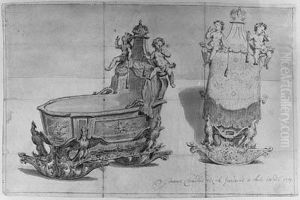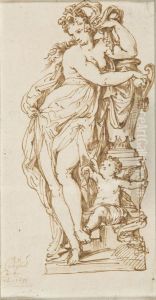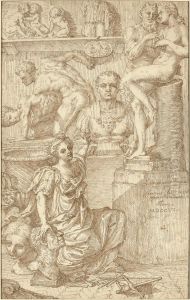Jan Claudius De Cock Paintings
Jan Claudius De Cock was a Flemish painter and draughtsman who was born in Antwerp, Belgium, in 1667. He was primarily known for his significant contributions to the Baroque period of art. De Cock was a part of a family of artists, and he was the son of the painter Jan Peeters I. His brother, Balthasar-Paul De Cock, was also a painter, indicating that the practice of art was a family tradition.
During his lifetime, De Cock developed a reputation for his work in religious and mythological subjects, landscapes, and architectural scenes. He was trained in Antwerp, which was a major center for artists during the 17th century due to the influence of Peter Paul Rubens and the continuation of the Baroque tradition. De Cock's style was influenced by the grandeur and dramatic effects of the Baroque, but he also integrated his own artistic sensibilities and techniques.
After his initial training in Antwerp, De Cock traveled to Italy, which was quite common for artists of his time. The journey to Italy was considered an essential part of an artist's education, as it provided exposure to the works of Renaissance masters and the vibrant artistic culture of cities like Rome. In Italy, De Cock further honed his skills and absorbed the Italian influence, which would be reflected in his later works.
Upon returning to Flanders, Jan Claudius De Cock became a master in the Guild of Saint Luke, an association of painters, sculptors, and other artists, in Antwerp in 1695. His career progressed as he took on commissions and produced works that were well received. Although his works were less known compared to some of his contemporaries, his contributions to the arts during the Baroque period were nonetheless valuable.
Jan Claudius De Cock died in Antwerp in 1735. While he may not be as widely recognized today as some of his peers, his works still represent an important part of the Flemish Baroque tradition. His legacy is preserved in the pieces that survive and continue to be studied for their craftsmanship and historical significance within the context of Flemish art.


